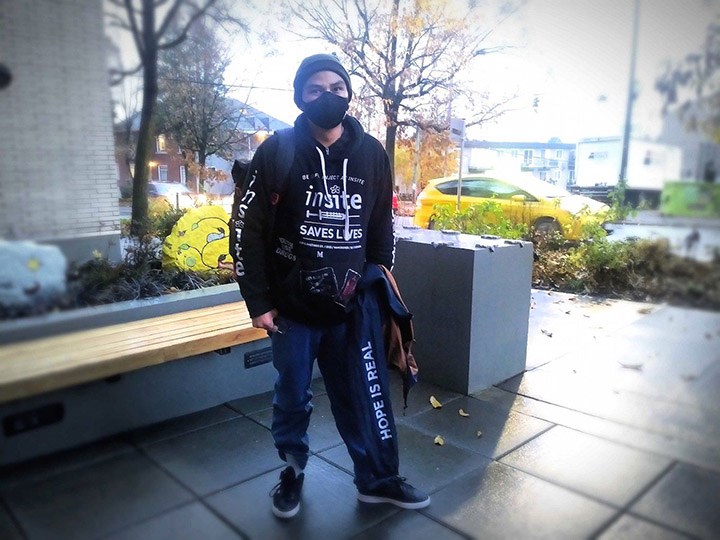False and harmful stereotypes about people who use methamphetamine drastically reduce access to already scarce harm reduction and health services, especially for youth, according to a new report.
Youth who use meth, a powerful stimulant, often do so for practical reasons like staying awake in order to stay safe, study or work, the report found.
But assumptions about meth users being violent, unpredictable or “zombie-like” often leave youth reluctant to seek care for fear of being dismissed or belittled.
And support for users suffering from sleep deprivation and safe spaces to rest are few and far between, particularly for youth who are street-entrenched or who work nights.
Many also become ineligible for youth treatment programs when they turn 18 or 19, and face even longer waits for access.
“When it comes to meth, and it being so demonized by media, the assumptions that youth are psychotic and are crazy just aren’t true,” said Kali Sedgemore, a peer outreach worker in Vancouver. “They’re using it to stay awake and to survive.”
Sedgemore is also the executive director of the Coalition of Peers Dismantling the Drug War and participated in the January 2020 youth summit that led to the recent report, prepared in partnership with the BC Centre on Substance Use.
They said being stigmatized by health-care providers, employers and landlords makes youth who use meth reluctant to ask for help to manage their sleep issues or mental health. And if they do seek help, few resources exist.
“It’s discouraging having that experience with using meth and just finding there was nothing out there,” said Sedgemore.
The report urges B.C. to develop more meth-specific sleep support like dedicated housing for youth and prescription or over-the-counter medication. It also calls for compassionate and anti-racist care and expanded treatment options, including safer supply, that are targeted at youth.
Rod Knight, the report’s lead researcher, said two-thirds of summit participants were Indigenous, which shows dismantling anti-Indigenous racism in health care is a critical part of improving the response to meth use issues.
“When we have really insidious forms of racism playing out in health-care interactions, it’s only worsened when you have other forms of stigmatization also at play, like stigmatization of substance users,” said Knight, a research scientist with BC Centre on Substance Use and assistant professor of social medicine at the University of British Columbia.
Knight said it is understandable many resources are focused on opioids, as their increasing toxicity has led to more than 6,000 deaths in B.C. since 2016.
But he says there should be more focus on the role that meth can play in overdoses and deaths, as well as their other harms for youth.
“We know that for many young people, crystal meth use co-occurs with other forms of substance use,” said Knight, who co-authored the report.
In the most recent report on overdose deaths in B.C., meth and other amphetamines were a relevant factor in 35 per cent of deaths. Meth’s presence in toxicology tests of victims more than doubled from 14 per cent in 2012 to 39 per cent in 2019.
In the first six months of 2020, 60 youth under 24 died of drug toxicity in B.C.
A hyper-focus on opioids “does lead to public health not paying attention or offering sufficient investments and interventions to respond from the harms that can occur from meth use,” said Knight. “And some harms can be very different among what can occur from opioid use.”
Meth has specific harms such as malnutrition and disorders such as stimulant-induced psychosis, as well as suicidal ideation and behaviour.
Rodney Stehr, a graduate researcher at UBC who helped organize the summit, said it’s important to focus on the strength and resilience of youth in developing solutions.
“Youth are looking after themselves and after their friends, they have leadership and expertise,” said Stehr.
While the research was completed before the pandemic took hold in B.C., Stehr and Knight say they hope the report will guide meth resource development and education in the province.
“Young people truly are a priority on this front,” said Knight. “They experience harms in key ways, and at a key point in life, that can have knock-on effects that influence life-course trajectories.”
Sedgemore says the year since the youth met has already brought mixed changes. “It’s made things a little better and a little worse,” they said.
Meth pipe distribution has increased and slowly expanding safer supply has given meth users more options for prescription alternatives.
But Sedgemore and their colleagues are focused on reconnecting with people they lost touch with as public health measures were introduced to fight the pandemic.
And with few supervised inhalation spaces for people to smoke meth or fentanyl, “there are not a lot of safe spaces for meth users to go.”
“We’re slowly trying to reconnect, but it’s difficult when you just drop people off,” said Sedgemore.



